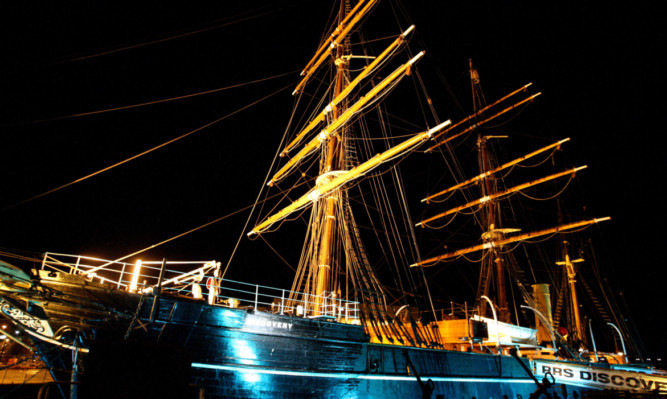RRS Discovery’s return to Dundee three decades ago has been hailed as the spark that ignited Dundee’s ongoing regeneration.
Speaking on the 30th anniversary of the Discovery’s homecoming on Sunday, Lord Provost Bob Duncan said it was a “vital asset”, while Professor Stewart Brymer, who helped secure the ship’s return, said it continues to play a key role in Dundee’s redevelopment.
The Royal Research Ship Discovery was the first vessel built specifically for scientific research.
Launched in 1901, it cost £44,372 the equivalent of more than £38 million today.
The crew for the British National Antarctic Expedition included Captain Robert Falcon Scott and Sir Ernest Shackleton.
After five months at sea, she finally reached Antarctica and was trapped in frozen ice for two years before being freed by explosives to return to the UK.
The Discovery was used as a research ship for decades before becoming a training vessel, but by 1979 was in a poor condition and deteriorating.
A £500,000 Maritime Trust grant was awarded that year that allowed restoration work to begin, but it was not until 1985 that plans to return the Discovery to the city in which it had been built were agreed.
A year later she left her berth at St Katharine’s Dock in London and was carried back to Dundee on the transport ship Happy Mariner.
The Discovery’s arrival on April 3 1986 was more than just a homecoming, however, her return is seen as a pivotal moment in Dundee’s recent history.
Lord Provost Duncan said: “It is a vitally important asset to the city now.
“It was great when it came back to Dundee and it fits in very well with the V&A it’s an excellent location with the two sitting side by side.”
The ship is now looked after by Dundee Heritage Trust.
Heritage and exhibitions manager Gill Poulter said: “Discovery is really important to Dundee’s history and heritage.
“Undoubtedly, Discovery was important for regenerating the city and turning perceptions of the city around so it could be seen as a tourist attraction.”
Professor Stewart Brymer, honorary president of Dundee Heritage Trust, said he was immensely proud at its effect on Dundee and it is fitting the V&A will be sited next to it.
He added: “We can look back with a lot of pride at the role Discovery has had, and continues to have, in the regeneration of the city.”
